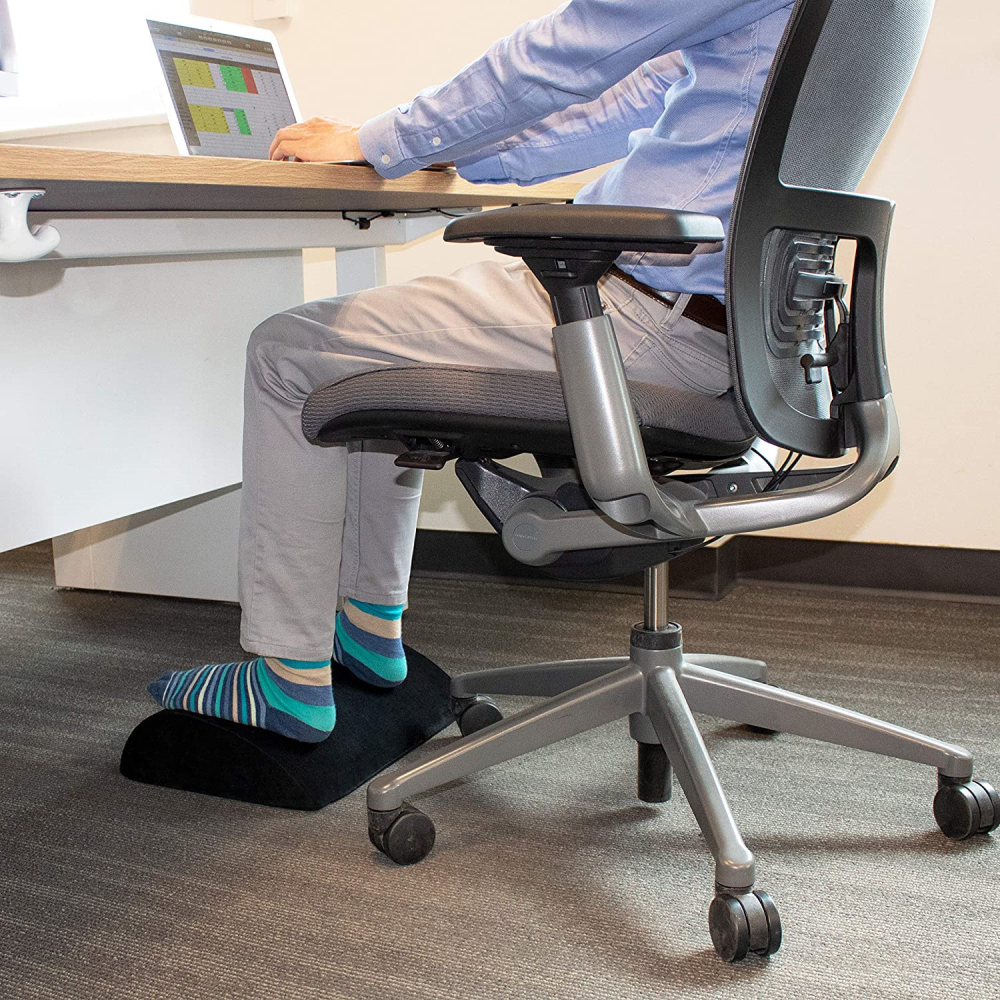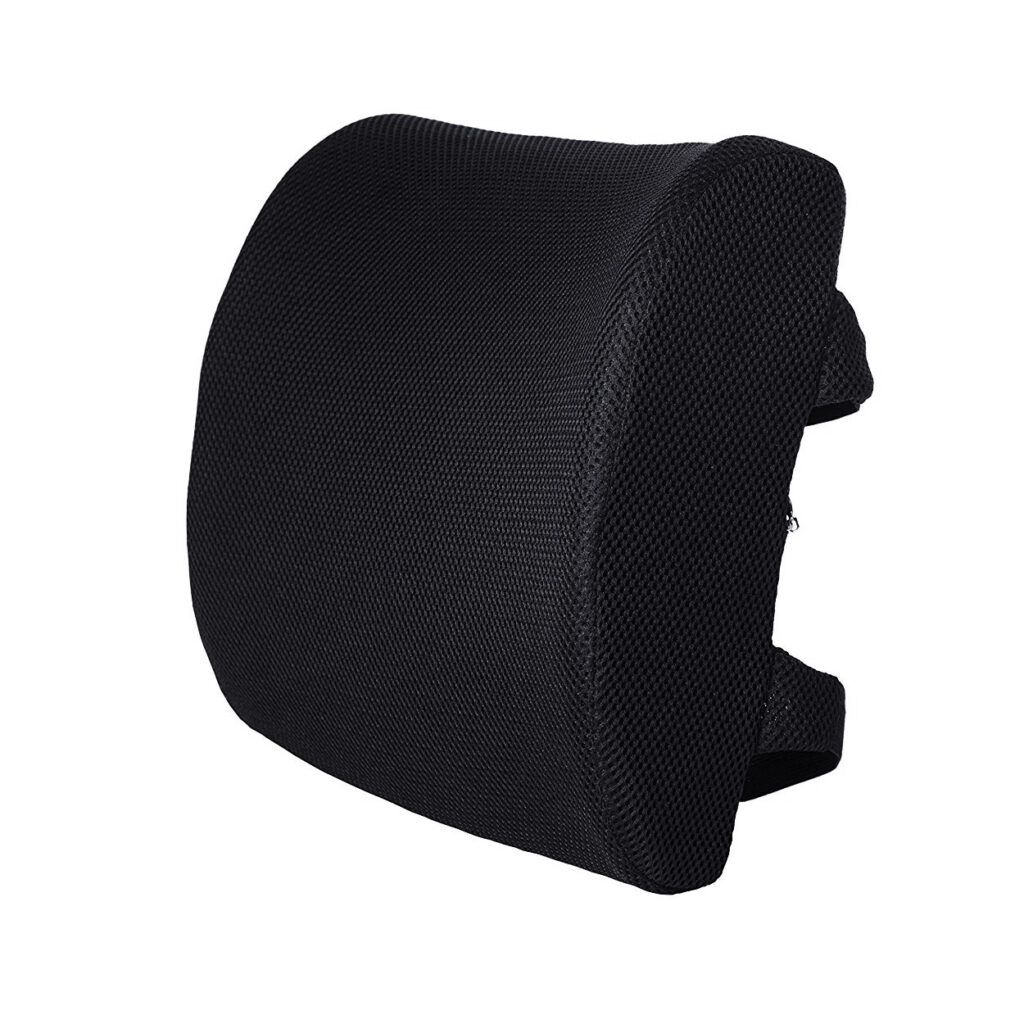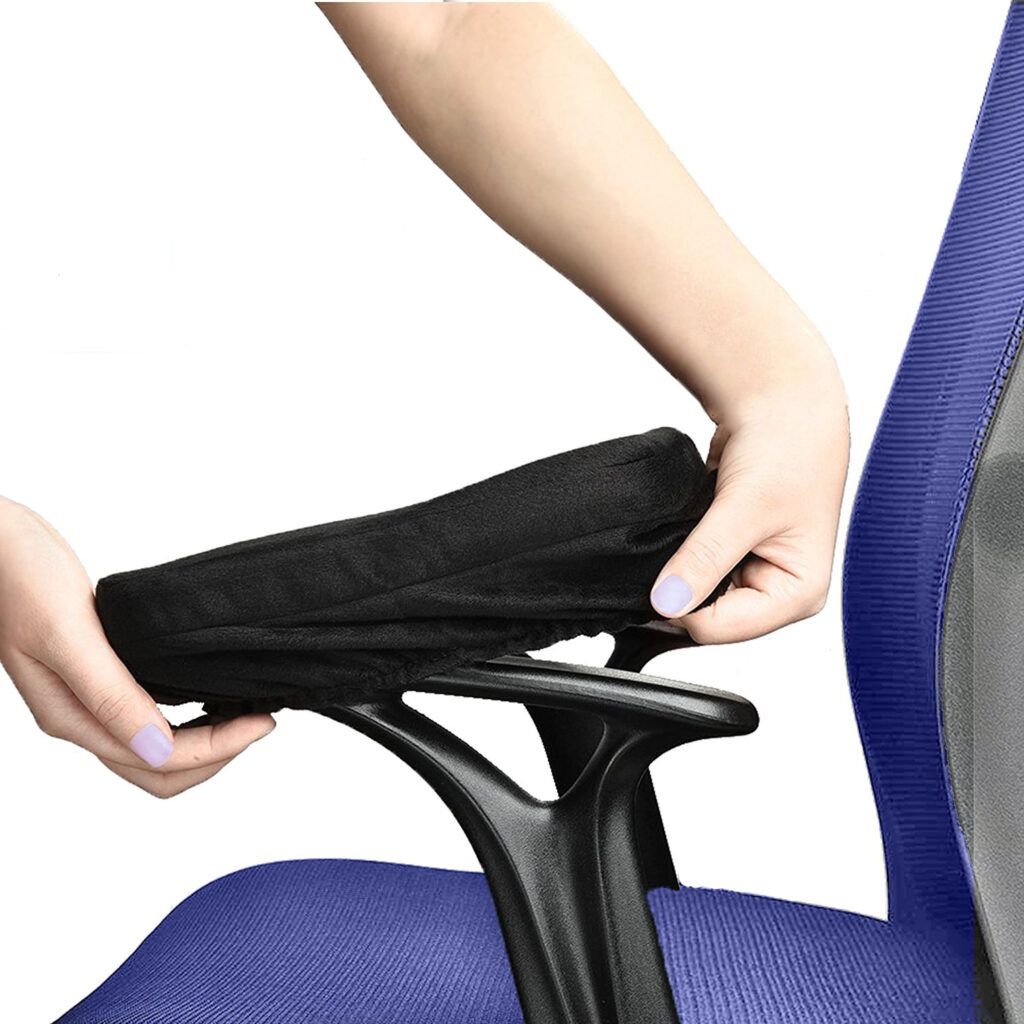If you are anything like me, you have to work on a desk. Sure, you can slouch around on a sofa or a bean bag or even on your bed, but if you need work done on time, the desk is where you go. Well, what if I told you that your desk is not actually your desk but everyone’s desk? Sounds confusing, doesn’t it? Let me explain.
Very few people have the luxury of making custom desks that fit them ergonomically. Like me, most folks out there settle for whatever desk their employers, schools, or parents provide them. These desks are built for many different people of varied shapes and sizes. Their ill-fittedness to the proportions of your body may cause long-term back and shoulder pain problems. Since you spend so much time sitting at a desk, it is imperative that you find a desk that is ergonomic, but as we discussed, ergonomic custom desks are expensive.
So, what do you do now? Do you succumb to the future where you have consistent body pains? You’ve lost all hope. The sky is bleak. But wait! In the distance, you see a silver lining, aka, this blog. In this blog, I will show you ways you can feasibly and ergonomically set up your desk so that you may never suffer from back pain in the future. So let’s jump right in.
1. Adjust the height of your chair.

According to ergonomics expert Jon Cinkay from the Hospital for Special Surgery in New York, the chair should be placed at a height from a desk such that your arms form a 90-degree angle. (Insert image of 90-degree arm)
Most desks are between 29 to 30 inches high, which is the ideal height for people who are 6 feet tall. This is surprising because most people (me) are not 6 feet tall. This is especially unfair to women, where their average height is 5 feet 4 inches. This means that most men and women won’t have their feet touching the ground once they have adjusted their chairs to the optimum height, as explained by Jon Cinkay. Well, in that case, Mobius’ footrest cushion can come in handy. You may place the cushion below the table and rest your foot on it. Hence the name, footrest cushion. The cushioned surface is also soft and comfortable, allowing you to use it barefoot. Since it has a removable and washable cover, it is fairly easy to clean.
We also provide the footrest in different shapes and sizes that are proportional to the height of our customers.
Our footrest foam: https://foammfg.com/product/foot-rest-cushion/
If the height of your chair is not adjustable, you may use a coccyx cushion.
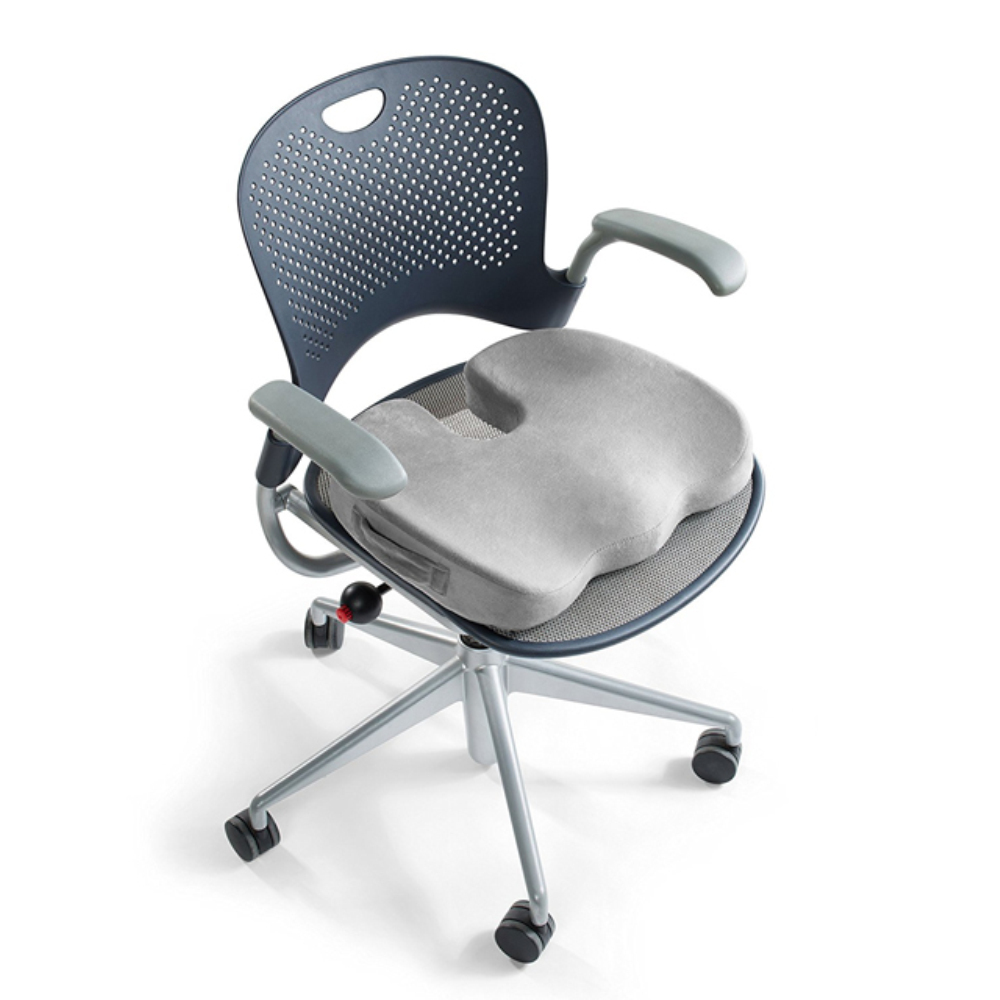
The coccyx cushion helps distribute weight evenly and helps minimize pain caused by sitting too long on the coccyx part of your body. Its ergonomic design disperses weight from the pelvic region onto the left and right bones on your buttock, thereby reducing the pressure on the coccyx. This cushion is beneficial for all users, especially pregnant women. The wedge on the coccyx cushion lifts your desk chair, allowing relief to the tailbone while also providing balance to the pelvis. You may purchase our molded memory foam coccyx cushion by following the link below:
Our coccyx cushion: https://foammfg.com/product/coccyx-cushion/
2. Adjust your monitor.

The monitor is an essential part of modern desk setups. It should be placed at an arm’s length so that the text on display is easy to read. This way, you do not have to bend forward and put pressure on your posture. You should neither be too close to the monitor nor too far because both put a strain on your eyes. The height of the monitor should increase or decrease such that the top of the monitor is level with your eye. If the height of your monitor cannot be adjusted, you may use any hard object, such as large books or reams of paper, and place it under the monitor to raise it to the perfect level.
3. Use a back cushion

Like the average desk, the average seat, too, is not made custom-fitted to your back. And those that are custom-fitted can cost north of a thousand dollars! I’ve got a cheaper alternative for you. Use a back cushion. A back cushion is angled in a way that supports your vertebrae when seated. If you are a sloucher like me, it helps keep your posture aligned to the chair and provides much-needed support to your back. You may use Mobius’s CertiPUR-US certified portable back cushion in any place where you sit for long hours, be it your office chair or your car seat.
Our back cushion: https://foammfg.com/product/back-cushion/
4. Adjust keyboard and mouse.
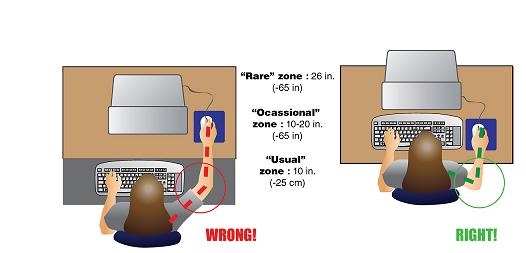
The keyboard and mouse are universally present on almost all desks in our times. Therefore, you must know where to place them for maintaining a healthy body. The keyboard should be placed exactly where your hands end up after the 90 degrees arm position discussed in step 1. Your mouse should be right next to the keyboard. You must ensure that you move the mouse using only your elbow and not your shoulders. This will prevent pain in your shoulders from prolonged exertion. In addition, you may use armrest pads to cushion your arms on the chair. This is especially useful for people who spend much of their time with their hands on the desk, such as typists, or graphic designers, providing them with soft, comfortable support for their tired arms. You may find Mobius’s armrest by following this link:
Our armrest pads: https://foammfg.com/product/armrest-pads/
5. Adjust desk peripherals.

Apart from the keyboard and mouse, a desk might have a notebook, some pens, and a telephone placed on it. It is important that you place all these peripherals within reach of where you are seated. Jerking your body or over-extending your arms to grab a pen might result in a pulled muscle. Similarly, the phone should be placed on the left side of your desk. This will allow you to use your left hand to attend to phone calls while your right-hand makes notes or uses the mouse. If the phone was placed at the right side of the desk, it is likely that you would cradle it between your head and shoulder in order to free your right hand to make notes, putting pressure on your neck and shoulder. If you use the phone regularly, purchasing a headset is recommended.
6. Move and stretch every hour.
According to our ergonomics expert, John Cinkay, after 15 minutes, most people begin to slouch in their chairs. He recommends some exercises one should do while sitting. The first exercise is called a chin tuck. Here, one must move your head back and forth in a manner similar to when you’re listening to your favorite music.

The second exercise is called the upper trapezius stretch. Here, one must tilt their hide sideways while pulling gently with the corresponding hand. For instance, if I tilt my head to the right, I should use my right hand to gently tilt my head further. This is useful for releasing the knots on your upper traps.
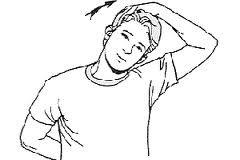
The third exercise is called a scapular retraction. Here, one must squeeze shoulders back in forth in order to stretch the back and shoulders.

Lastly and most importantly, you must always get up from your chair after every hour. Go to the washroom, or grab a coffee, or chat with your colleagues but make sure you get up from your chair once the hour turns. This allows your stiff muscles to relax and keeps you healthy from back pains in the long run.





